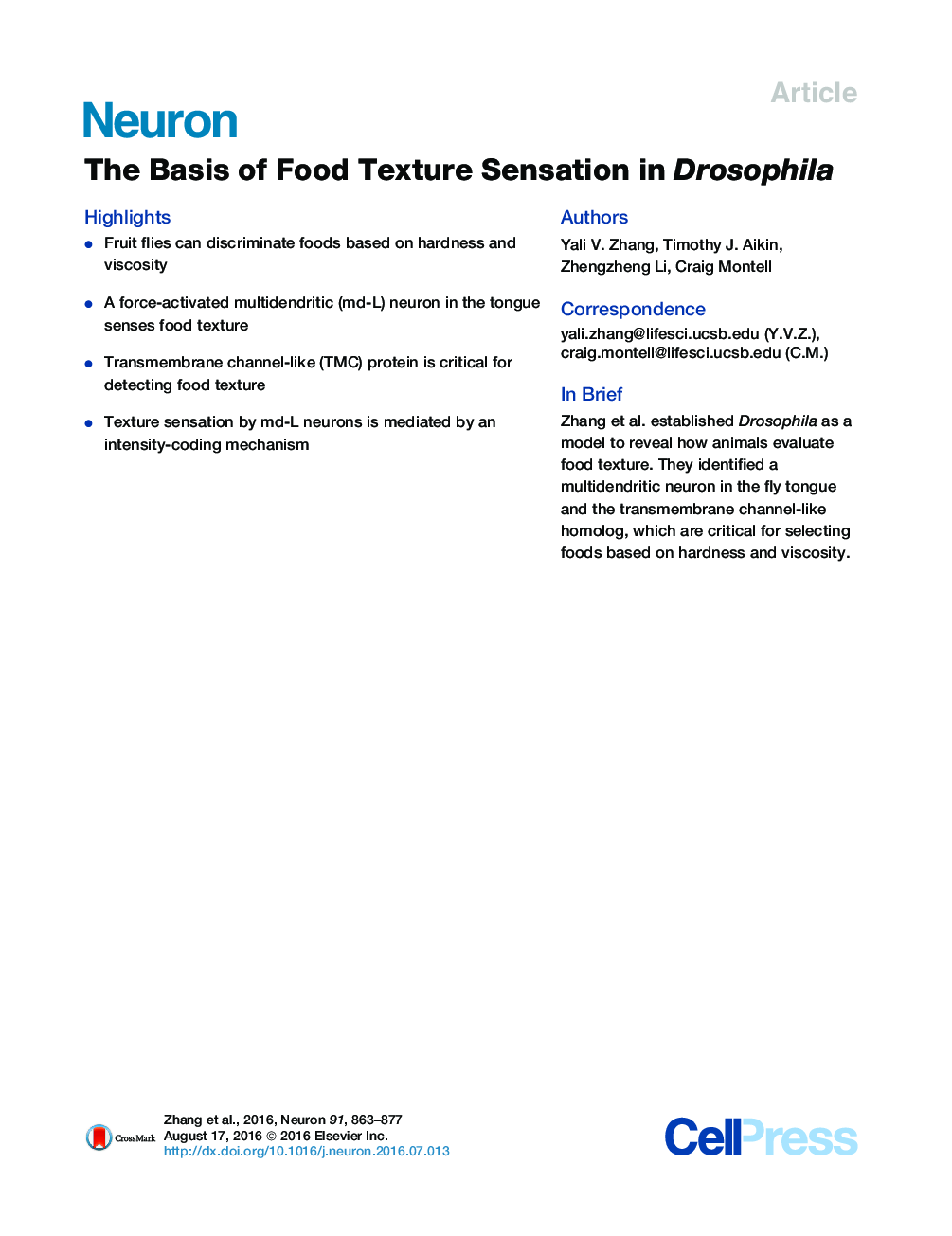| Article ID | Journal | Published Year | Pages | File Type |
|---|---|---|---|---|
| 4320664 | Neuron | 2016 | 15 Pages |
•Fruit flies can discriminate foods based on hardness and viscosity•A force-activated multidendritic (md-L) neuron in the tongue senses food texture•Transmembrane channel-like (TMC) protein is critical for detecting food texture•Texture sensation by md-L neurons is mediated by an intensity-coding mechanism
SummaryFood texture has enormous effects on food preferences. However, the mechanosensory cells and key molecules responsible for sensing the physical properties of food are unknown. Here, we show that akin to mammals, the fruit fly, Drosophila melanogaster, prefers food with a specific hardness or viscosity. This food texture discrimination depends upon a previously unknown multidendritic (md-L) neuron, which extends elaborate dendritic arbors innervating the bases of taste hairs. The md-L neurons exhibit directional selectivity in response to mechanical stimuli. Moreover, these neurons orchestrate different feeding behaviors depending on the magnitude of the stimulus. We demonstrate that the single Drosophila transmembrane channel-like (TMC) protein is expressed in md-L neurons, where it is required for sensing two key textural features of food—hardness and viscosity. We propose that md-L neurons are long sought after mechanoreceptor cells through which food mechanics are perceived and encoded by a taste organ, and that this sensation depends on TMC.Video Abstract To view the video inline, enable JavaScript on your browser. However, you can download and view the video by clicking on the icon belowHelp with MP4 filesOptionsDownload video (56181 K)
